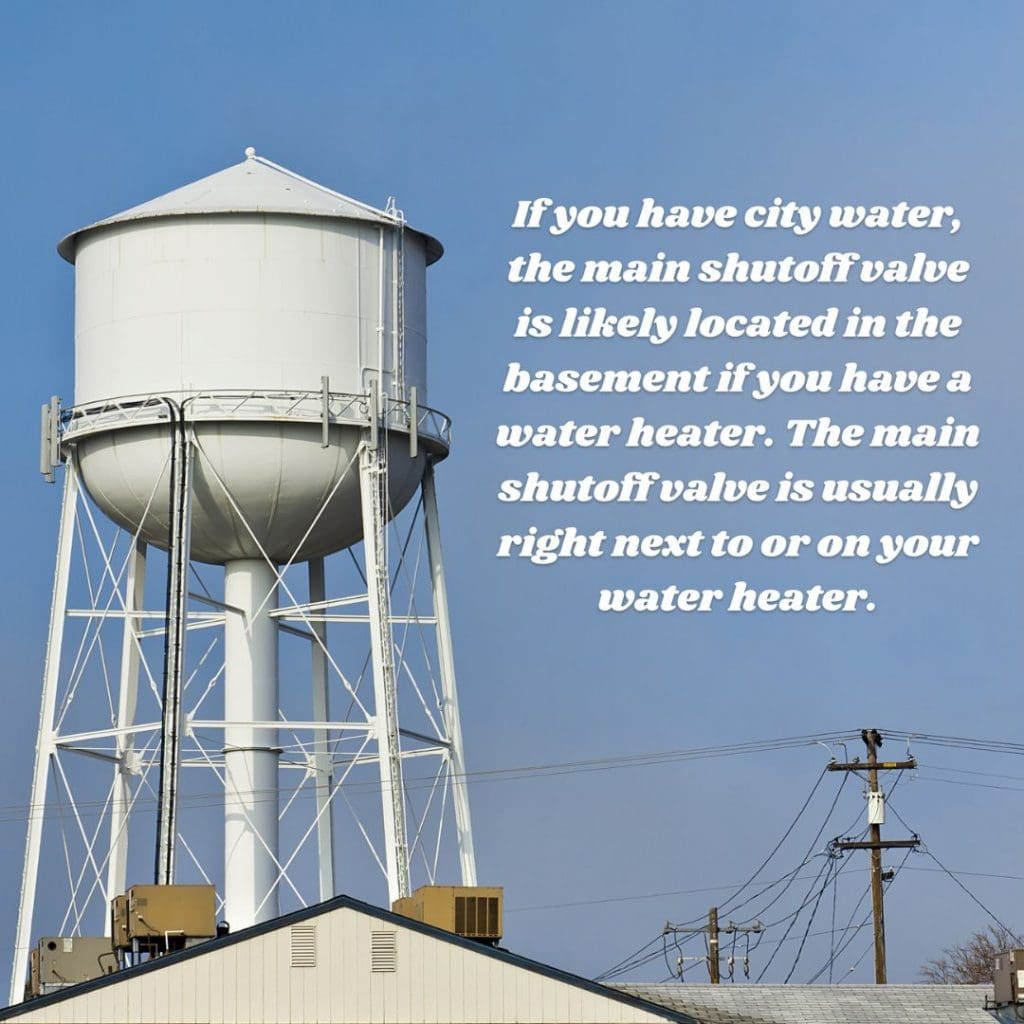If you have no water in the house, you may be panicking. Don’t worry—some simple steps can help you figure out what’s going on and get things back up and running. In this article, I’ll give you an overview of how a typical residential water system works, then offer detailed instructions on what to look for when locating the source of a problem. Let’s start with something simple: if your house has city water (public utility-supplied), there could be something wrong on the utility’s side or in your home’s pipes.
If you have city water, the problem could be on the utility’s side.

If you have city water, the problem might not be your house but rather with the utility’s side of things. To start troubleshooting, check to see if there is any water on your property. If so, this could mean that the main shutoff valve has been turned off or is leaking. It’s also possible that one of your neighbors may be using a lot of water at one time.
If there is no water coming out of any faucets in your home and your yard has no evidence of leakage or flooding, then it’s time to look further into things by checking each component individually:
- Check the main shutoff valve first and ensure it hasn’t been inadvertently switched off or left open. If this doesn’t solve anything, move on to other items on this list, like checking the meter.
Often, the main shutoff valve is located in the basement.
- The main shutoff valve is likely located in the basement if you have a water heater. The main shutoff valve is usually right next to or on your water heater.
- If you need to know where your main shutoff valve is, call a professional plumber to come and find it for you. They’ll be able to locate and turn off your water supply in no time.
If you have well water, one or more system components could fail.
If you have well water and find no water in your home, the first thing to check is the pressure tank or switch. If it’s working correctly, move on to investigate higher-level issues like a faulty well pump.
If you’re seeing no signs of life with your well water, head outside and ensure there’s power going to where you think it should go—this could be an issue with wiring or voltage going into your house.
Next up: check all your pipes leading into and out of each faucet inside your home; sometimes, these fail due to hard usage over time. You’ll also want to ensure everything looks good on top of the ground level—check for any cracks in concrete around access points into the ground (like where pipes enter). Finally, take a walk around outside near where these things end up coming together at their final point: either before entering into homes or after leaving them; if there are any cracks here, then this could potentially lead them straight through.

If you have a well, check the pressure tank.
If you have a well, the first thing to check is your pressure tank. The tank should be located in either your basement, mechanical room, or crawl space.
A typical well-drilled in most parts of the country supplies water at 20 gallons per minute (gpm). However, if you have an older home or one that was built before World War II, this flow rate may be reduced significantly. A newer home with modern plumbing fixtures can use about 70-80 gpm for all its fixtures—kitchen sink faucet, bathroom showers, and toilets combined.
If you have a well, check your submersible pump.
If you have a well, check your submersible pump.
- First, check the voltage and amperage. If they are too high or too low, this may indicate a problem with the electrical wiring or motor.
- Then, check the water pressure and flow rate using a pressure gauge (the kind used in plumbing). This will tell you if there is any blockage in the system that needs to be cleared out. If there is no blockage but still no water coming out of your faucet or shower head, then you might have a problem with the piping itself—or it could simply be an issue with one of your valves being closed at either end of your house’s plumbing system.
Check for frozen pipes.
- Check for frozen pipes. Frozen pipes can cause damage to your home, so it’s important to check for this. First, check the outside faucets and make sure water comes out of them. If there is no water from any of your outdoor faucets, then there is probably a frozen pipe somewhere in your house, and you should call a plumber immediately.
If none of these checks help and you have no water in the house, call C&J Well Co.
If none of these checks help and you have no water in the house, call C&J Well Co. They’ll be able to find the problem and fix it, saving you money on your water bill. They’re also experts at saving energy!
The key is that you should not panic if you have no water in the house. There are several things to check before calling for professional help. If none of these checks help and you have no water in the house, contact the professionals at C&J Well Co., and we can help out, usually on the same day!









